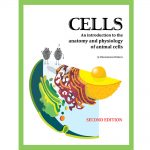- Description
Description
TO SEE PHOTOS AND SAMPLE PAGES ON PINTEREST: https://www.pinterest.com/ellenjmchenry/cells-curriculum/
*****************************************************
FREE SAMPLE CHAPTERS:
Cells 2nd edition Activities for Chapter 1-3
*****************************************************
Target age group: ages 10-15
Topics covered: The history of the discovery of cells, the molecule structure of phospholipids and phospholipid membranes, the cytoskeleton and its functions, motor proteins, ATP and the mitochondria, how the electron transport chain works, amino acids, proteins, DNA discovery, translation, transcription, mRNA, tRNA, ribosomes, chaperone proteins, lysosomes, enzymes, endoplasmic reticulum, Golgi bodies, docking proteins and protein synthesis inside endoplasmic reticulum, the structure of the nucleus, the nucleolus and how ribosomes are made, histones, nucleosomes, rRNA, cell metabolism, overview of digestion, chylomicrons, fatty acids, glucose, the Krebs cycle, acetyl-CoA, phagocytosis, pinocytosis, exocytosis, glycolysis, mitosis, meiosis, and overview of common body cells such as epithelial (skin, capillary, goblet, villi), muscle cells, neurons, bone cells and blood cells.
Length of student text: 102 pages (some color diagrams included)
Length of teacher’s section (extra activities): 108 pages (which includes pages of patterns for games or crafts)
Activities include: Edible fluid mosaic model, paper membrane model, membrane simulations, phospholipid ornament, motor protein pen craft, “Motor Protein Relay Race,” paper model of ATP synthase, “Electron Transport Chain Relay Race,” paper DNA model showing all atoms, tRNA cookies, hands-on activity about transcription and translation, “Roller Coaster Review” game, “Translation Relay Race,” lysosome simulation game, edible Golgi body models, DNA extraction lab, some virtual DNA labs (online), make a cell “mini-mural” from scratch, cell bingo (with challenging review game), “Respiration Relay Race,” mitosis flip book, “Jeopardy” review game, “Supply Chain” board game about protein transport in neurons.
Video links: An extra feature of this curriculum is that it incorporates free supplemental videos. You can access most of the links by using my YouTube channel: www.YouTube.com/TheBasementWorkshop, then find the “Cells” playlist. (Sometimes you have to click on “Show all playlists.”)
NOTES:
— You can still use the curriculum even if you can’t access the Internet links. The links are really terrific, but they are not so essential that you can’t do the curriculum without them.
— The concepts covered in this curriculum are considered high school level; however, they are presented in a manner that makes them accessible to younger students. The activities that go along with the text are a key part of making these concepts understandable to younger ages. Yes, it is worth it to gather the materials for the crafts and the labs!
— You’ll notice that quite a few of the activities are group games such as relay races. This curriculum is ideal for doing with a group, but these group activities can be modified for use with just one or two students. Don’t shy away from using it just because of the group activities.








